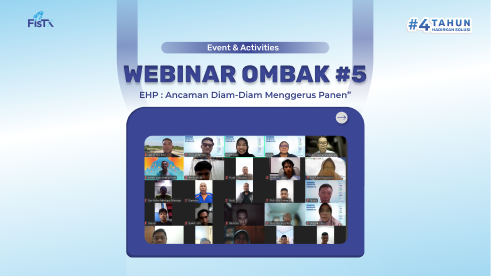
6 Strategic Steps to Optimize Shrimp Farming Water Quality During the Rainy Season
The rainy season often poses a significant challenge for shrimp farmers. As they welcome abundant rainwater, they are faced with the challenge of controlling water quality, which requires careful strategies. Optimal water quality is key to ensuring shrimp health and growth. Therefore, this article will discuss six main water quality parameters that play a central role in shrimp farming during the rainy season.
By understanding the unique dynamics of the rainy season and taking appropriate preventive actions, farmers can ensure that their shrimp farming remains successful and sustainable. In this article, we will explore 6 main water quality parameters, their conditions during the rainy season, and strategies to maintain ideal conditions.
1. Water Temperature:
Conditions During Rain:
Water temperature can decrease due to the influence of colder rainwater and increased water volume in the ponds.
How to Make It Ideal:
- Use aerators to maintain optimal temperature.
- Lower the water level to allow easier absorption of sunlight into the water column.
2. Salinity:
Conditions During Rain:
Rainfall can bring freshwater into the ponds, thus reducing salinity levels in the pond water.
How to Make It Ideal:
- Monitor salinity regularly.
- Add seawater periodically to achieve optimal salinity levels.
3. Dissolved Oxygen:
Conditions During Rain:
Rainfall can reduce dissolved oxygen levels due to increased water volume and decreased photosynthesis by phytoplankton.
How to Make It Ideal:
- Increase the number of aerators.
- Replace pond water and provide carbon elements.
4. Water pH:
Conditions During Rain:
Rainfall can affect water pH, making it more acidic or alkaline.
How to Make It Ideal:
- If the pH is too alkaline, bacterial fermentation can be applied.
- If the pH is too acidic, liming can be done, using CaO for example.
5. TOM, Ammonia, and Nitrite:
Conditions During Rain:
During the rainy season, shrimp tend to reduce their appetite. Uneaten feed that accumulates at the pond bottom can decompose and become a source of ammonia in the pond.
How to Make It Ideal:
- Maintain water quality monitoring and adjust feeding accordingly.
- Use waste-degrading bacteria to control ammonia and nitrite levels.
6. Pathogens:
Conditions During Rain:
Total organic matter (TOM) tends to increase during the rainy season. This condition can increase the risk of diseases from pathogens in the ponds.
How to Make It Ideal:
- Apply probiotics like TipTopp Pond containing Bacillus for bacterial and pathogen balance.
- Optimize feed management.
Read also: The Role of Bacillus Bacteria in Shrimp Farming
By understanding and effectively managing water quality parameters during the rainy season, shrimp farmers can reduce risks and improve productivity. These preventive measures not only support shrimp health but also contribute to the sustainability of shrimp farming operations.


